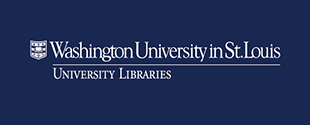This studio draws attention to the political and social contexts within which public art is commissioned and encountered. It suggests that landscape architects should participate in the development of a critical language for the discussion of topics that the idea of public art involves. By implication, it asks also how site-specific art in public places connects with landscape architecture in the public realm.
To regulate student work, the four classical elements of earth, air, fire and water (the “classical tetrad”) were invoked, and students were required to base their work in one of these elements, as a way to enter the world of phenomena (rather than through, say, ecological, horticultural or infrastructural frameworks).
Additionally, students were asked to consider a site as an assemblage - a dynamic interactive set of physical and non-physical systems, in which they should intervene on the basis of their interpretation of the classical element assigned to them.
Finally, the studio used the generative capacity of landscape operations to develop designs for the sites that they discovered through GIS processing. When students use operations to develop design outcomes, they are not designing toward specific or even general objectives. They simply explore the range of landscape conditions that are made possible by manipulating topographies, hydrologies and ecologies through, for instance, the operations of excavation, or dispersal, or aeration. They do what the process suggests that they do, but with careful attention to the articulation of the novel conditions it provokes. This means that design outcomes may be quite surprising, even challenging; often outside the realm of civic administrators’ expectations of landscape architectural intervention.
The studio critiqued the assumption that urban public space should always provide amenity, especially if it is drawing attention to problematic conditions of social existence. Perhaps the real objective of the studio was to demonstrate that public space can be the site both of social discourse (where community issues are played out rather than civic ideals are enacted) and of considered landscape-driven urban provocations.
Partners: University City Community Development
Printing is not supported at the primary Gallery Thumbnail page. Please first navigate to a specific Image before printing.


![[Xiaoxin Cao Studio Board] by Xiaoxin Cao [Xiaoxin Cao Studio Board] by Xiaoxin Cao](https://openscholarship.wustl.edu/spring2015_barnett/1000/thumbnail.jpg)
![[Chelsea Cole Studio Board] by Chelsea Cole [Chelsea Cole Studio Board] by Chelsea Cole](https://openscholarship.wustl.edu/spring2015_barnett/1001/thumbnail.jpg)


![[Wanyi Liu Studio Board] by Wanyi Liu [Wanyi Liu Studio Board] by Wanyi Liu](https://openscholarship.wustl.edu/spring2015_barnett/1004/thumbnail.jpg)

![[Jinghan Shi Studio Board] by Jinghan Shi [Jinghan Shi Studio Board] by Jinghan Shi](https://openscholarship.wustl.edu/spring2015_barnett/1006/thumbnail.jpg)
![[Linda Zambito Studio Board] by Linda Zambito [Linda Zambito Studio Board] by Linda Zambito](https://openscholarship.wustl.edu/spring2015_barnett/1007/thumbnail.jpg)
